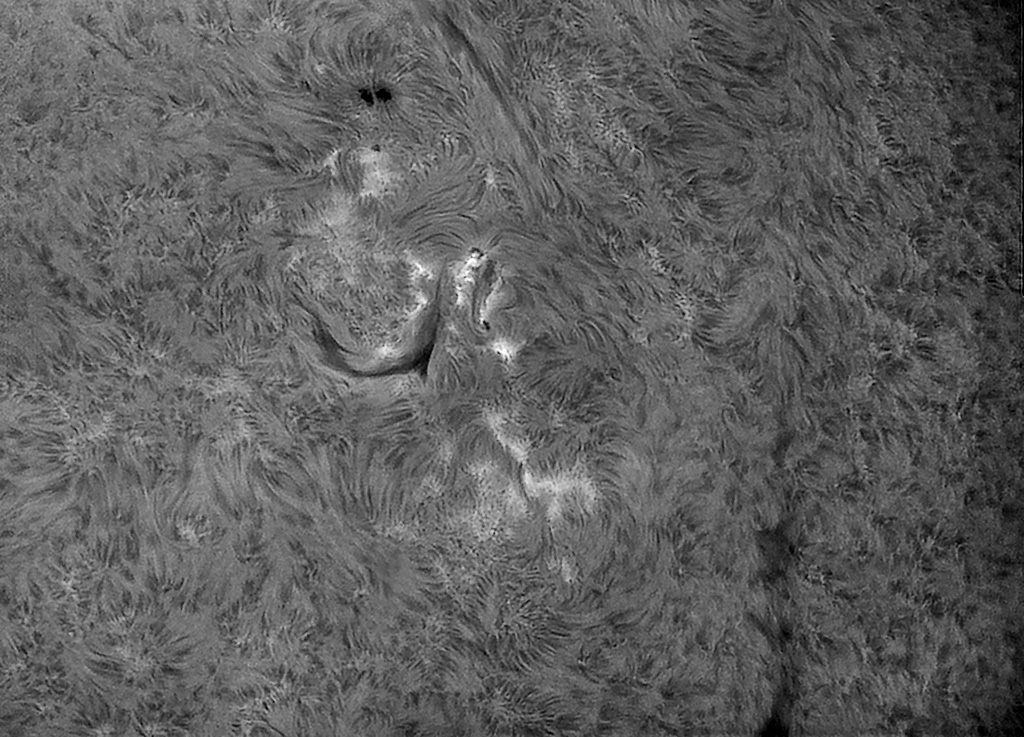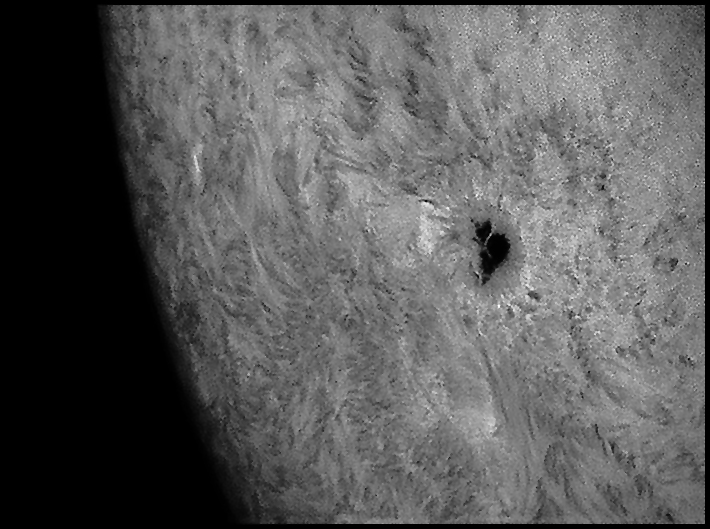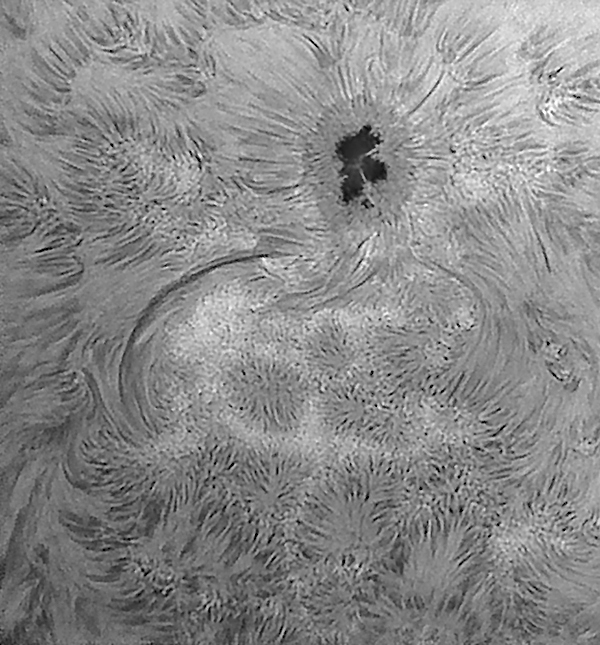|
04/01/2013. Alas, not an April fool joke. It's been this long since I had the solar kit out. Terrible seeing and too many clouds limited what I could do today. I grabbed this snapshot (only 200 frames, best 80 used here) of new AR 1711 during one brief clear spell mostly to remember how to run the hard- and software. Doesn't it look a lot like a little Mandelbrot set surrounded by all that chaotic plasma?
AR 1711 rotates into view
The telescope is piggybacked on the AT10RC. I'd removed the Robofocus to simplify the telescope over the winter when it had to be used as a portable, tended outfit, so focusing today was by hand. That's usually OK, but in the wind, with so much shimmering air, and without long clear spells, the result was a little soft. Over-aggressive sharpening produced the grainy, gritty image above. A quick look at the images at the top of this page suggests how much expertise needs to be regained. No surprise there. So let's set the bar low and post this to mark the beginning of the new solar year. After I packed it in for the day, I remounted the focus motor and drive belt. I think they're on there more solidly than before. There's something off about the B600 blocking filter. The "upwind" side shows what looks like moisture or fungus that resisted all attempts to clean it using the Baader cleaning kit. I removed the mirror from the diagonal (after some messy attempts to remove the filter) so I could clean the back side of the glass. No improvement. Probably a coating defect, per Lunt discussion groups, and probably under warranty. I'm not convinced this has much effect on rays entering nearly normal to the surface -- today's session did not seem much if at all hampered. I'll know more when I get a chance to play with it under steadier air.
04/03/2013. Caught a C1.7 flare in AR1711. Not particularly sharp (looking through increasing haze), but not bad (best 100 out of 400 frames):
04/03/2013. A clear and reasonably steady day with a big sunspot near the solar meridian. This is fun. 2,500 frames, best 250:
I was reasonably pleased with this until I saw what Philippe Tosi did with a C14 and a 0.5A filter (Spaceweather.com). If I want to play in or near that league, I'll need to get the 152mm achromat working again. I don't particularly want to dismount the AT10RC to make room for it on the Mach1 mount, so I think for the moment it's better to keep refining technique with the 90mm 'scope. We'll see how it goes.
:: top ::
| |||
© 2012, David Cortner





